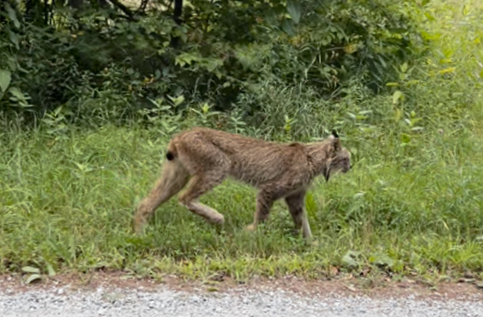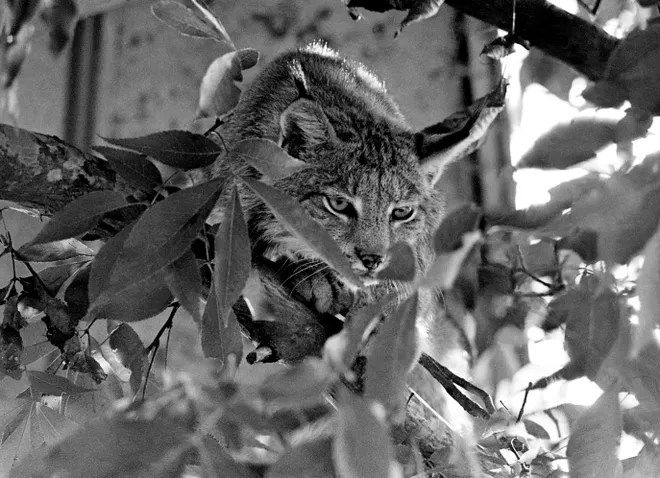Rare wild cat spotted in Vermont for the first time in six years: Watch video

A rare native wild cat was spotted in Vermont earlier this month for the first time since 2018.
The endangered Canada lynx was seen in Vermont's Rutland County, for the first time in almost six years, in a video recorded on Aug. 17, Vermont Fish and Wildlife Department (FWD) said in a news release Wednesday.
Video footage captured by several members of the public shows the lynx, assumed to be a male, walking along a road edge. The lynx appeared to be on the thinner side and observers reported the animal was calm around passing cars.
“Although this lynx appears to be on the thinner side, its calm behavior around passing cars as reported by observers is not unusual for a dispersing individual,” Vermont FWD wildlife biologist Brehan Furfey said in a statement. “This lynx was probably just focused on finding food in an area where hares are not abundant and on avoiding competition with bobcats and fishers while passing through southern Vermont.”
"Dispersing" is a behavior in which a lynx moves through the region looking to establish its own territory. Furfey explained that dispersing lynx can move quickly over long distances, and it is possible that the lynx is no longer in Vermont.
Exciting sighting for Vermont
Furfey said the lynx sighting in the state was important and exciting because “Canada lynx are endangered in Vermont and threatened nationally,” and because the cat was spotted in Rutland County, which is "far south of most confirmed lynx reports in Vermont.”
Vermont is on the southernmost edge of the Canada lynx's range and these wild cats are usually sighted in the state's Northeast Kingdom, which provides the best climate, habitat and food source, Vermont FWD said. Lynx hunt snowshoe hares and both species need young forest habitats and reliable snowpack to thrive, Furfey said.
"In Vermont the best combination of climate, habitat and enough hares to support lynx is in the Northeast Kingdom, and even that is on the low end compared to areas of New Hampshire and Maine where lynx are more common," the wildlife biologist said.
The region where the lynx was spotted was not suitable for a "large numbers of snowshoe hare or, by extension, lynx," Furfey explained, making the sighting even more exciting.
Vermont Fish and Wildlife has received over 160 reports of lynx sightings since 2016, but only seven of those were confirmed, the department said, with the most recent being from Jericho in 2018.
“If you think you’re looking at a lynx the most helpful thing you can do is take a photo or video and send it to the Fish and Wildlife Department,” said Furfey. “The large majority of photographs our biologists receive are bobcats, but that doesn’t exclude the possibility that a Canada lynx will show up one day.”
Canada lynx

The Canada lynx is characterized by grizzled gray fur, exceptionally large paws, long hind legs, long black ear tufts and short, black-tipped tail. These mid-sized boreal forest carnivores are similar to bobcats in size and appearance and can weigh up to 30 pounds, according to U.S. Fish and Wildlife Service.
The Canada lynx is "designated as a distinct population segment and listed as threatened under the Endangered Species Act in 2000." In the U.S., they are mostly found in northern Maine, northern New Hampshire, northeastern Minnesota, northwestern Montana, northern Idaho, north-central Washington and western Colorado.
Saman Shafiq is a trending news reporter for USA TODAY. Reach her at sshafiq@gannett.com and follow her on X and Instagram @saman_shafiq7.
Disclaimer: The copyright of this article belongs to the original author. Reposting this article is solely for the purpose of information dissemination and does not constitute any investment advice. If there is any infringement, please contact us immediately. We will make corrections or deletions as necessary. Thank you.



